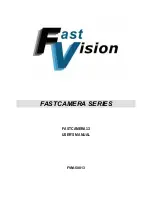
209
Misc
ellane
ous
11
Glossary of terms
A (Aperture Priority) Mode
You set the aperture yourself and the camera automatically varies the shutter
speed so that the picture is taken with the best exposure.
AE (Automatic Exposure)
The camera’s built-in exposure meter automatically sets the exposure. The 3
AE modes available on this camera are
P
mode, in which the camera selects
both the aperture and shutter speed,
A
mode, in which the user selects the
aperture and the camera sets the shutter speed, and
S
mode, in which the
user selects the shutter speed and the camera sets the aperture. In
M
mode,
the user selects both the aperture and the shutter speed.
Aperture
The adjustable lens opening which controls the amount of light that enters the
camera. The larger the aperture, the shorter the depth of field and the fuzzier
the background. The smaller the aperture, the greater the depth of field and
the sharper the background. Larger aperture values indicate smaller
apertures, and smaller aperture values indicate larger apertures.
CCD (Charge-Coupled Device)
This converts light passing through the lens into electrical signals. On this
camera, light is picked up and converted into RGB signals to build a single image.
Contrast Detection Method
This is used to measure the distance to the subject. The camera determines
if the image is focused by the level of contrast in the subject.
Conventional Photograph
This refers to recording images using silver halide (the method for recording
images in conventional, non-digital photography). This system is in contrast
to still video and digital photography.
DCF (Design rule for Camera File system)
A standard for image files by the Japan Electronics and Information
Technology Industries Association (JEITA).
DPOF (Digital Print Order Format)
This is for saving desired print settings on digital cameras. By entering which
images to print and the number of copies of each, the user can easily have the
desired images printed by a printer or print lab that supports the DPOF format.
Eclipsing (Vignetting)
This refers to when an object obscures part of the field of view so that the
whole subject is not photographed. Vignetting also refers to when the image
seen through the viewfinder does not exactly match the image shot through
the objective lens, so the photographed image includes objects not seen
through the viewfinder. In addition, vignetting can occur when an incorrect
lens hood is used, causing shadowing to appear in the corners of the image.
ESP (Electro-Selective Pattern) Light Metering/Digital ESP Light
Metering
This determines the exposure by metering and calculating the light levels in
the center and other areas of the image separately.
















































